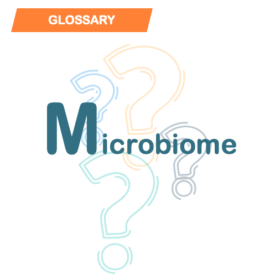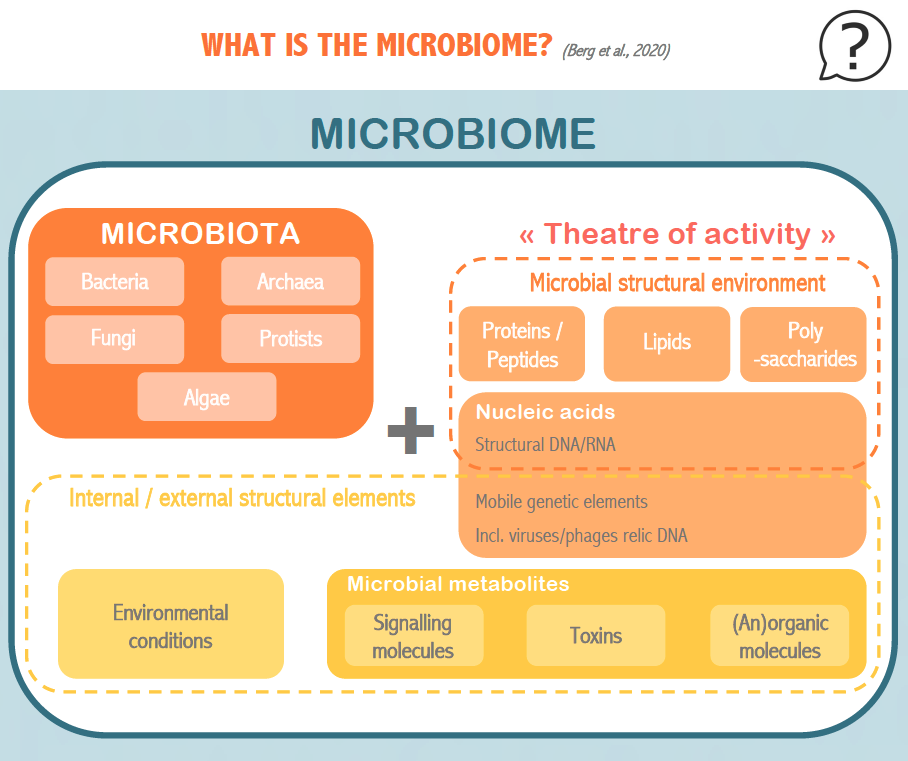 You may be already familiar with the microbiota, an organ that is the subject of so much research and is involved in several health phenomena. But do you know the microbiome? How is it defined? How is it different from the microbiota?
You may be already familiar with the microbiota, an organ that is the subject of so much research and is involved in several health phenomena. But do you know the microbiome? How is it defined? How is it different from the microbiota?
Microbiota and microbiome: Two similar yet different words
Although they sound similar, the two words do not have the same meaning. A recent study (Berg et al., 2020) highlights the distinctions between microbiota and microbiome.
The microbiota is defined as all the micro-organisms living on or inside a living being. It consists mainly of bacteria, but also fungi, viruses, protozoa, archaea, etc. The term “microbiota” refers to the microorganisms present, i.e. all the counted individuals.
Several microbiota exist within the same organism, depending on the organ colonised. The best known and most studied is the intestinal microbiota. But others have also been the subject of research, such as skin, vaginal, respiratory, and oral microbiota.
The microbiome refers to the sum of all microbial organisms, together with all their genes evolving in a particular environment. Thus, the microbiome includes the microbiota, genomes, microbial metabolites, and the biological, physiological and chemical conditions of the environment.
The schema below gives an overview of what the microbiome can represent:

LC



